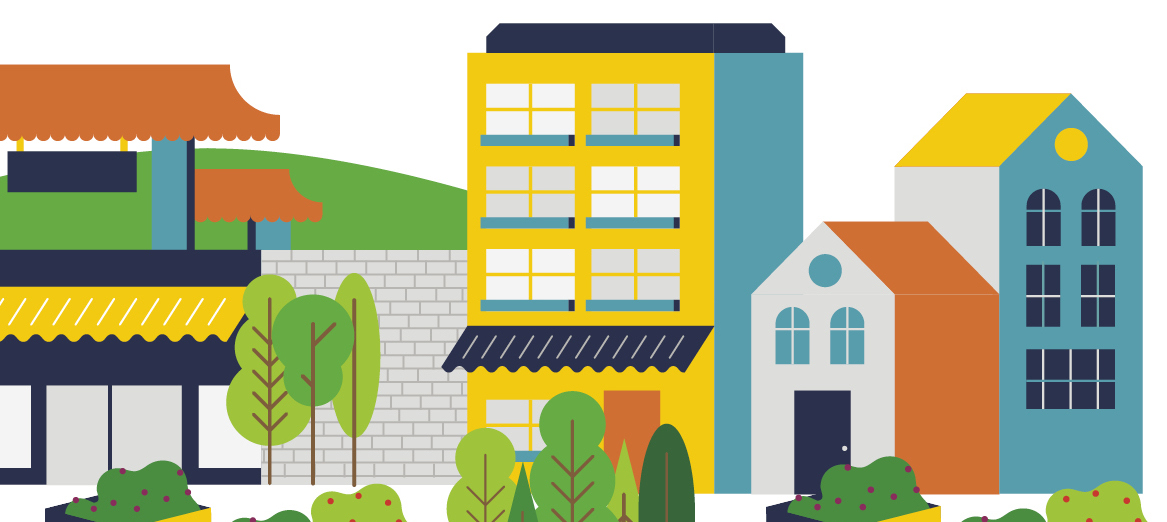“We found ourselves here in many different ways. Some of us came a long time ago. Some of us came recently. Many of us grew up in Seattle. Many of us grew up across the globe. We are black, brown, and white. We are Filipino/a, Somali, Ethiopian, Vietnamese, Cham, African American, Latinx, American, and much more. We are Muslim, Buddhist, Christian, and more. We speak many languages, but share the same home.
We do many things in our community—raise our families, go to school, work, worship, celebrate, do business, shop, build, care-give, and hope for the future. We are youth, elders, and everyone in between. We are strong and resilient together.
Some of us no longer live here because rent became too expensive or we didn’t own land. But we frequently return because our families, businesses, schools, cultural cen¬ters, and places of worship are still here. We have roots here.
For all of these reasons, and despite increasing economic pressure to make us leave, we intend to stay.” - Graham Street Community Action Team
We set out to plan differently.
We're proud to have worked over the last year alongside community groups in the Graham Street Neighborhood to develop a shared vision for the future. Together we imagined what development without displacement could look like for our neighborhood after the new light rail station is opened in 2031.
We aren’t waiting, though, for property values to rise and rents to go up – we are planning now to ensure that the communities who are here can choose to stay here.
The full vision may be accessed here.
Stopping displacement in the Graham Street neighborhood, especially with a new light rail station, won’t be easy. We needed a different approach than the usual community design process that emphasizes physical improvements to a neighborhood, like open space, lighting, public art and facades. What is the point of those improvements if the community is no longer here to benefit from them? We need a more fundamental shift in the planning paradigm that includes creating the power and resources to drive development and investment ourselves.
Over the last year, the Graham Street Community Action Team formed to both envision the future of the neighborhood and start building the capacity and infrastructure needed to make the vision a reality. This was our strategy:
Invest in organizing and building power: Puget Sound Sage and the CAT shared resources to ensure we could do the community organizing needed to engage our neighbors in multiple planning workshops and tap into a wealth of community expertise. With many languages and cultures in the community, we knew that building a shared sense of identity would make a stronger vision and create more power to advance it.
Center leadership of people of color: People of color, low-income people, immigrants, and refugees are the most vulnerable to displacement in our region and, thus, the experts in both understanding the problem and developing the solutions to thrive in place.
Build on existing assets: Despite decades of disinvestment in the Graham Street neighborhood, our communities have built and sustained multiple institutions, faith centers, homes, gathering places, and green spaces. We can build on these assets and experiences to as we take our vision to scale.
Plan for systems change: Building a few community projects won’t be enough to stem displacement. Our planning also must emphasize the systemic racial inequality that leads to displacement. By weaving in a racial justice analysis, we can advance solutions to undo systemic racism in housing and economic opportunity by creating new, more just policies
Plan for self-reliance: To implement community-ownership, we will need both public and private sector partnerships. But, we start with an assumption that we will drive development ourselves. This includes how to own land, find climate resiliency solutions, grow food, and build strong communities.
What’s next?
Over the next year, Sage and the CAT will learn together how other communities have driven and created resources for their own development projects We will combine this with existing expertise to develop a policy, finance, and ownership plan for the next decade.
We are proud of the work we have done together. Stay tuned for more updates from the Community Action Team throughout the next year!


